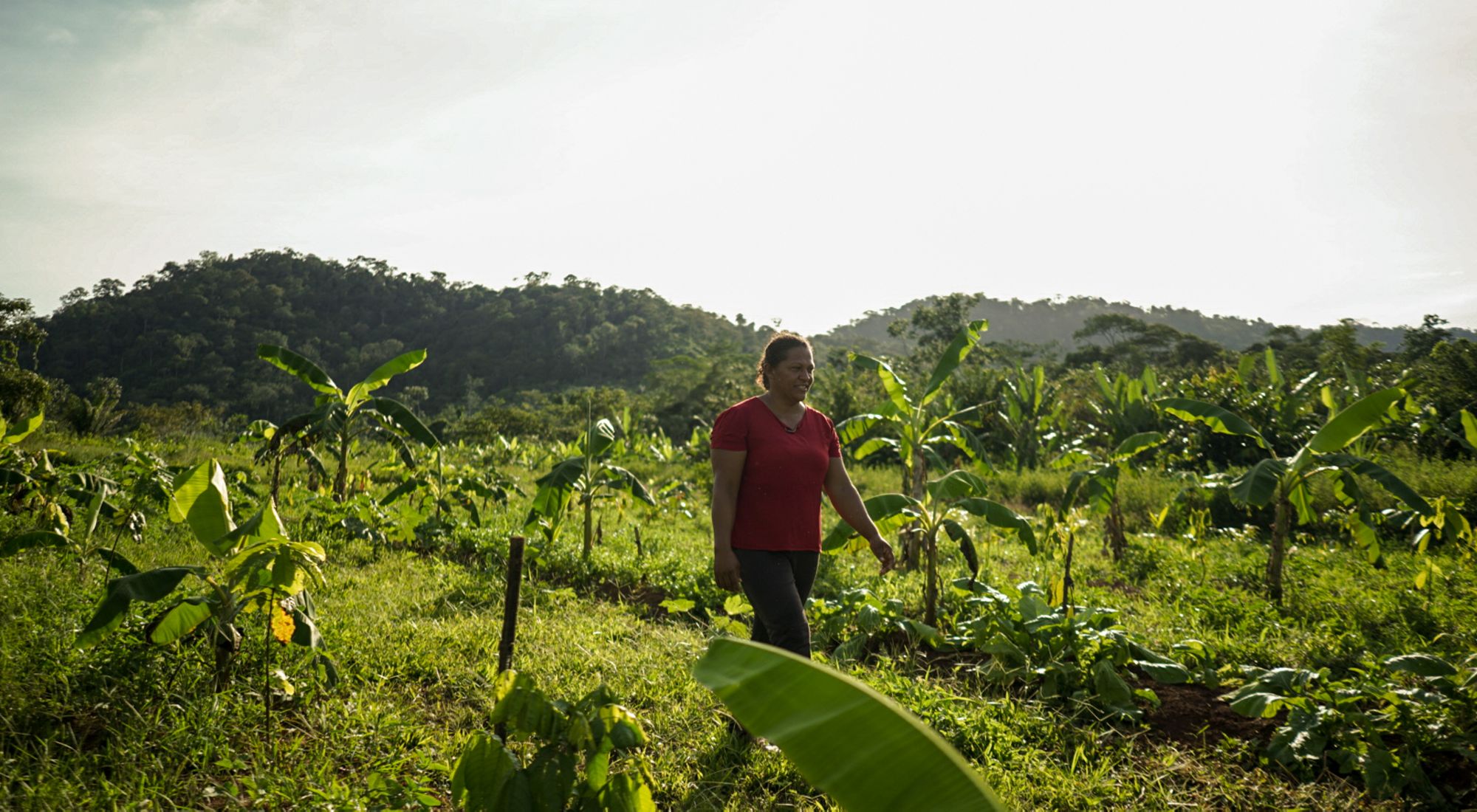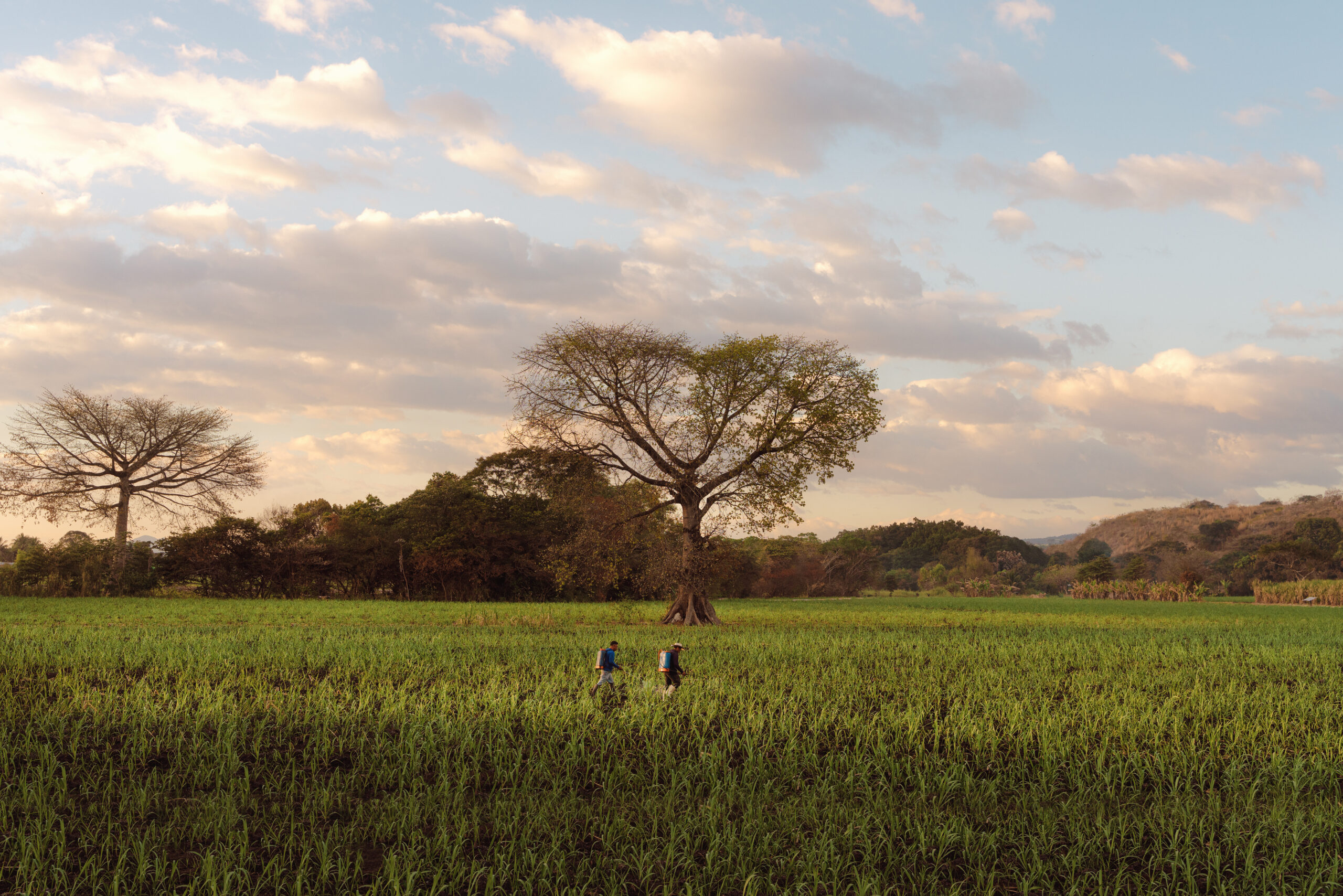The Gran Chaco, South America’s second-largest forest after the Amazon, spans Argentina, Bolivia, and Paraguay, covering over 110 million hectares. This unique region holds immense ecological value, presenting an opportunity to align Paraguay’s thriving beef industry with sustainable land management practices.
Agroforestry emerges as a powerful strategy to address environmental challenges while fostering a resilient ecosystem and economy. By integrating trees, crops, and livestock on the same land, this approach enhances biodiversity, sequesters carbon, and supports sustainable livelihoods, creating lasting harmony between agriculture and nature.
At STTG AG, we embrace agroforestry within global frameworks such as the Taskforce on Nature-related Financial Disclosures (TNFD). Through the combination of cattle ranching and reforestation projects, we actively restore ecosystems in the Gran Chaco, promoting sustainable growth and environmental stewardship.
The Ecological Significance of Agroforestry in the Gran Chaco
The Gran Chaco is a unique ecosystem with significant biodiversity, home to over 3,400 plant species and hundreds of animal species, many of which are endangered or endemic to the region. However, agricultural expansion, primarily for cattle ranching and soybean production, has driven deforestation at alarming rates—up to 300 acres of forest are cleared daily. This makes agroforestry an essential tool in mitigating these impacts. By integrating native trees with agriculture, farmers can restore ecosystems, preserve biodiversity, and maintain soil health, offering a sustainable alternative to traditional agricultural practices.
Agroforestry also increases ecosystem resilience by reducing erosion and improving water retention in the soil—critical advantages in the Chaco’s semi-arid climate. Trees create microclimates that protect crops and livestock from extreme temperatures, while their root systems enhance soil structure, preventing nutrient depletion. These systems, such as silvopasture, are being adopted to support sustainable cattle farming, improving the quality of grazing lands and generating multiple environmental benefits.
Indigenous Knowledge: The Foundation of Agroforestry Systems
Indigenous communities, such as the Qom and Wichí peoples, have long practiced agroforestry, combining native tree species like carob trees with subsistence crops to create sustainable agricultural systems. These traditional practices offer valuable insights into balancing economic activities with environmental preservation. Its modules developed by these communities often incorporate crop rotation and intercropping, ensuring soil fertility while diversifying food sources. Incorporating these practices has proven crucial in STTG AG’s agroforestry-projects by blending modern agricultural techniques with indigenous knowledge.
Indigenous-led agroforestry systems have also provided important social benefits, such as improved food security and employment. By participating in sustainable agriculture, communities can reduce dependency on extractive industries and strengthen their cultural connection to the land. STTG collaborates with indigenous groups to ensure that agroforestry initiatives reflect the needs and traditions of local communities, fostering inclusive economic growth.
Silvopastoral Systems: A Solution to Deforestation and Livestock Sustainability
Silvopastoral systems (SPS) are among the most promising agroforestry solutions in the Chaco, as they integrate trees with livestock grazing. This system not only improves the well-being of animals by providing shade and shelter but also helps restore degraded lands affected by overgrazing. In the Gran Chaco, STTG AG’s agroforestry projects utilize rotational grazing, ensuring that land is rested periodically to allow for vegetation regrowth and soil recovery.
The economic benefits of silvopastoral systems are also significant. By increasing forage availability and improving soil health, these systems enhance livestock productivity, generating higher income for farmers. Additionally, silvopastoral systems contribute to carbon sequestration, offering the potential to generate carbon credits and attract investment in sustainable agriculture. These outcomes demonstrate how agroforestry can align economic activities with environmental stewardship, making it a key strategy for sustainable land management in the Chaco.
The Importance of the Gran Chaco for Paraguay’s Economy and Environment
The Gran Chaco is home to a mosaic of cultures, indigenous communities, and biodiversity hotspots. Over 35% of this vast forest lies within Paraguay, making it an essential ecological and economic asset for the nation. However, deforestation rates remain alarming, driven by agricultural expansion for cattle ranching and soybean production.
Agroforestry practices in the region offer a sustainable alternative, enabling local farmers to generate income while safeguarding the forest. Indigenous communities have long practiced agroforestry, combining native species like carob trees with food crops. These systems reflect traditional knowledge and demonstrate a harmonious balance between economic activities and ecosystem protection.
How Agroforestry Works: Integration of Trees, Crops, and Livestock
Agroforestry is much more than planting trees. It involves interactions between agriculture and forestry to create symbiotic systems that provide food, timber, and ecosystem services. Common types of agroforestry systems include:
- Silvopastoral Systems (SPS): Integrates trees with livestock grazing, providing shade and fodder while sequestering carbon.
- Agrosilviculture: Combines crops with tree cultivation to diversify production and improve soil health.
- Riparian Buffers: Trees planted along waterways to prevent erosion and improve water quality.
- Alley Cropping: Crops grown between rows of trees, which act as windbreaks and reduce soil erosion.
In the Gran Chaco, silvopastoral systems are particularly effective in addressing issues related to overgrazing and soil degradation, helping farmers manage livestock sustainably while restoring forest cover.
STTG’s Agroforestry Projects in Paraguay: A Model for Sustainable Growth
At STTG AG, our agroforestry initiatives focus on sustainable cattle farming and forest conservation in the Gran Chaco. Through rotational grazing systems, we reduce overgrazing and allow vegetation to regenerate. This approach not only improves pasture quality but also contributes to carbon sequestration and biodiversity conservation.
Our collaboration with local communities ensures that indigenous knowledge is incorporated into our practices. For instance, we plant native species like carob trees, which are well-adapted to the region’s semi-arid climate and serve as a valuable food source for both livestock and people.
Additionally, reforestation projects within our agroforestry framework generate carbon credits that support Paraguay’s goals for sustainable development and attract investment from international markets.
Economic Benefits of Agroforestry: Carbon Credits and Market Opportunities
Agroforestry in Paraguay offers significant economic opportunities, especially through the emerging carbon credit markets. As carbon credits become increasingly valuable, sustainable agroforestry projects attract investors seeking to balance profit with environmental impact.
STTG AG’s agroforestry systems generate high-quality carbon credits by:
- Restoring degraded land and improving soil carbon levels.
- Reducing methane emissions from livestock through rotational grazing.
- Increasing biodiversity, which boosts ecosystem resilience.
We are working closely with the TNFD framework to align these activities with global sustainability goals. This alignment provides transparency for investors, encouraging them to support projects that deliver both financial returns and environmental impact.
Agroforestry as a Climate Solution: Mitigating the Effects of Deforestation
The Gran Chaco is highly vulnerable to climate change, with rising temperatures and erratic rainfall patterns. Agro forestry offers a climate-resilient solution, helping local farmers adapt to these changes. Trees act as natural regulators, reducing water evaporation and improving soil health. They also provide shade for livestock, enhancing their well-being during extreme heat.
Additionally, silvopastoral systems mitigate the negative effects of cattle farming, reducing deforestation and protecting biodiversity. Agroforestry creates a micro-climate that helps stabilize the ecosystem, ensuring long-term productivity.
Challenges and Solutions: Addressing Barriers to Agroforestry in the Gran Chaco
Despite its potential, agroforestry faces several challenges in the Gran Chaco:
- Water Scarcity: Agriculture in the region depends heavily on seasonal rainfall. STTG AG addresses this by implementing rainwater harvesting systems and installing water cisterns in key areas.
- Lack of Infrastructure: Small-scale farmers often lack access to financing and technical support. STTG partners with local organizations to provide training programs and access to microloans.
- Deforestation Pressure: Large-scale agricultural expansion threatens agro forestry efforts. We work to promote policies that incentivize sustainable land use and forest conservation.
Agroforestry and Indigenous Communities: A Collaborative Approach
Indigenous communities play a crucial role in agroforestry practices in the Chaco. STTG AG collaborates with indigenous farmers, ensuring that their knowledge and traditions are respected and incorporated into agro forestry modules. This partnership strengthens cultural ties to the land while promoting sustainable livelihoods.
These practices also empower women in these communities by providing them with opportunities to participate in food production, reforestation projects, and market activities. This inclusive approach aligns with several Sustainable Development Goals (SDGs), such as gender equality, climate action, and no poverty.
The Future of Agroforestry in Paraguay: A Sustainable Path Forward
As the demand for sustainable products increases globally, These practices will play a key role in positioning Paraguay as a leader in sustainable agriculture. Through integrated land management practices, STTG AG aims to expand its strategy footprint, helping restore degraded ecosystems while generating economic value.
Our goal is to create a resilient agricultural system that can withstand climate challenges and provide long-term benefits to local communities and investors. By aligning with TNFD recommendations, we ensure that our projects meet the highest standards for transparency and sustainability, building trust with partners and stakeholders.
Agroforestry as a Catalyst for Sustainable Development
These Practices in the Gran Chaco offers a viable path to sustainable development by balancing economic growth with environmental stewardship. At STTG AG, we are committed to scaling up Agro initiatives that deliver economic, social, and ecological benefits. By integrating traditional knowledge with innovative practices, we are building a sustainable future for Paraguay.
Through our projects, we not only restore ecosystems and sequester carbon but also empower local communities, creating inclusive economic opportunities. As we move forward, STTG AG will continue to lead efforts in sustainable agriculture, proving that there is nothing better than a tree.





